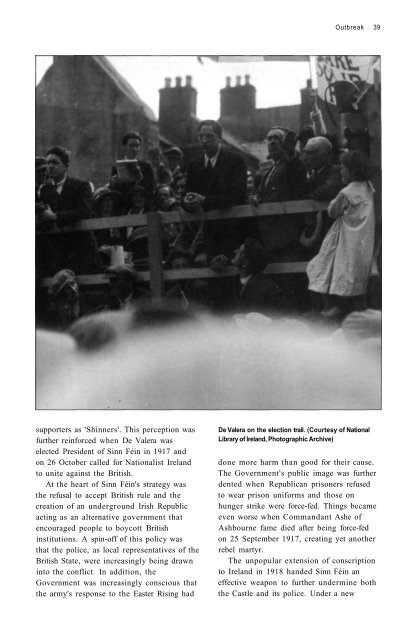Create successful ePaper yourself
Turn your PDF publications into a flip-book with our unique Google optimized e-Paper software.
Outbreak 39<br />
supporters as 'Shinners'. This perception was<br />
further reinforced when De Valera was<br />
elected President of Sinn Féin in 1917 and<br />
on 26 October called for Nationalist Ireland<br />
to unite against the British.<br />
At the heart of Sinn Féin's strategy was<br />
the refusal to accept British rule and the<br />
creation of an underground <strong>Irish</strong> Republic<br />
acting as an alternative government that<br />
encouraged people to boycott British<br />
institutions. A spin-off of this policy was<br />
that the police, as local representatives of the<br />
British State, were increasingly being drawn<br />
into the conflict. In addition, the<br />
Government was increasingly conscious that<br />
the army's response to the Easter Rising had<br />
De Valera on the election trail. (Courtesy of National<br />
Library of Ireland, Photographic Archive)<br />
done more harm than good for their cause.<br />
<strong>The</strong> Government's public image was further<br />
dented when Republican prisoners refused<br />
to wear prison uniforms and those on<br />
hunger strike were force-fed. Things became<br />
even worse when Commandant Ashe of<br />
Ashbourne fame died after being force-fed<br />
on 25 September 1917, creating yet another<br />
rebel martyr.<br />
<strong>The</strong> unpopular extension of conscription<br />
to Ireland in 1918 handed Sinn Féin an<br />
effective weapon to further undermine both<br />
the Castle and its police. Under a new



